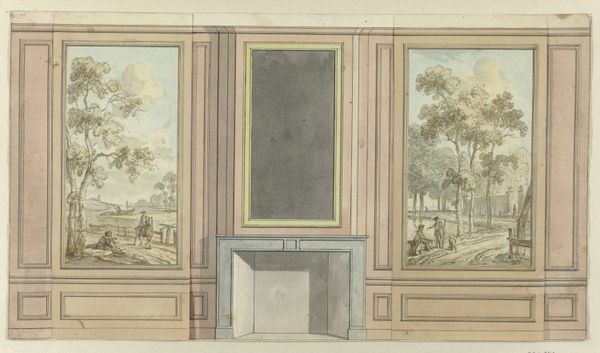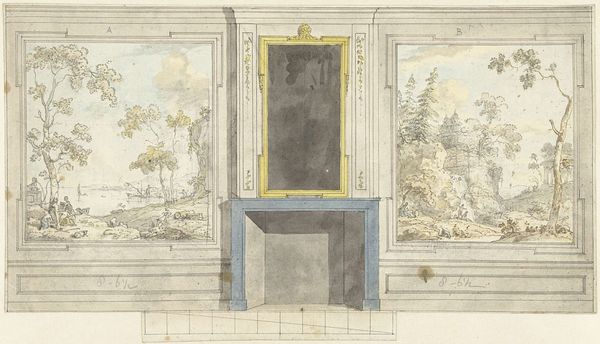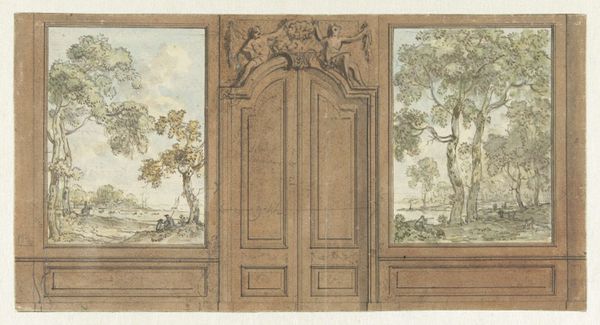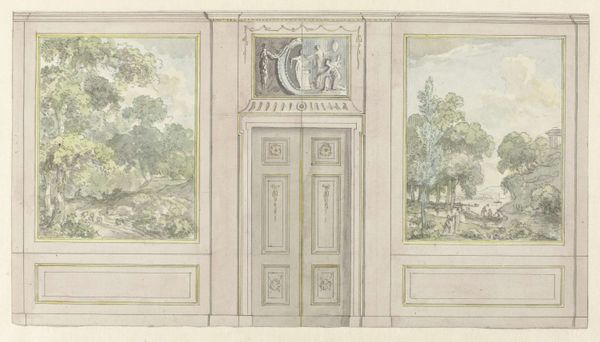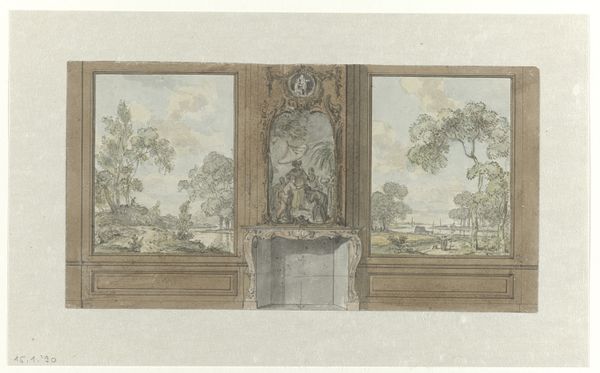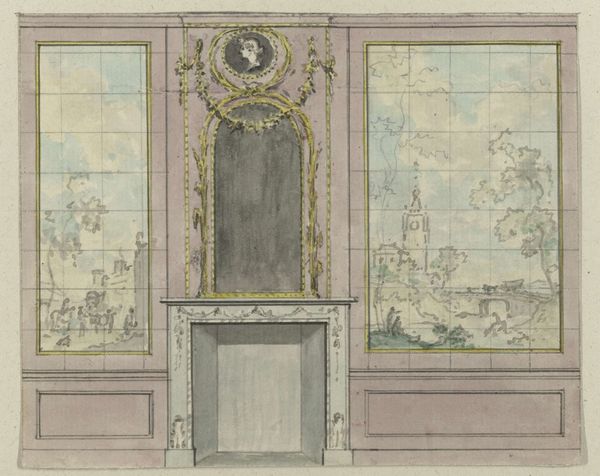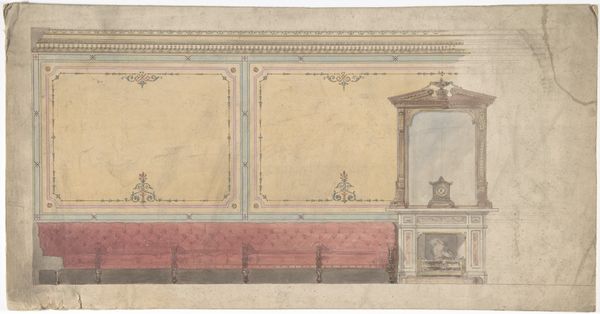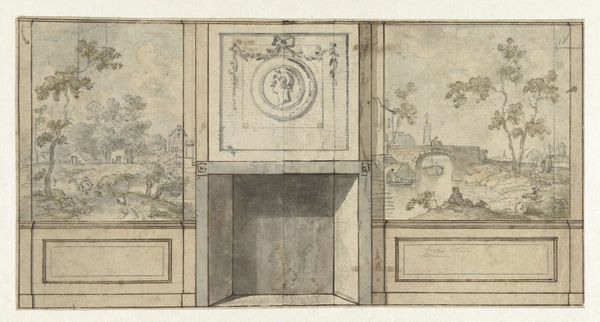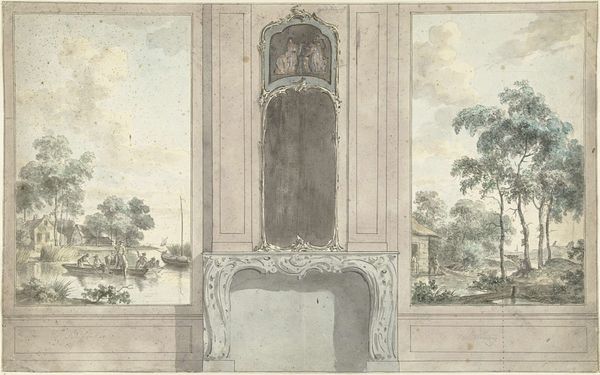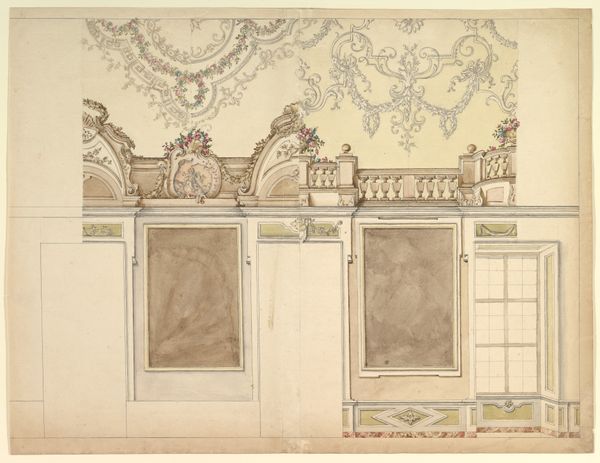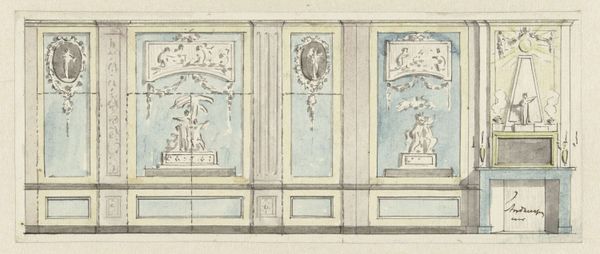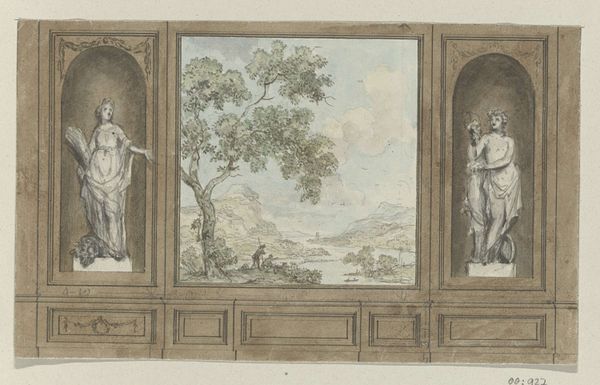
drawing, tempera, ink
#
drawing
#
neoclacissism
#
tempera
#
landscape
#
ink
Dimensions: height 153 mm, width 279 mm
Copyright: Rijks Museum: Open Domain
Editor: This drawing, "Ontwerp voor kamerwand," or "Design for a Wall Decoration," by Jurriaan Andriessen, dates from around 1752 to 1819. It's ink and tempera on paper. The landscapes either side of the fireplace really catch my eye; they feel so serene, like idealized visions of nature. What kind of imagery strikes you in this piece? Curator: For me, this work is saturated with the visual language of Neoclassicism, a movement deeply invested in cultural memory. Notice the architectural follies – the rotunda and the temple – embedded within these idyllic landscapes. They're not just decorative; they're loaded symbols of classical antiquity, representing a longing for a perceived golden age of reason, order, and harmony. Editor: So, it's more than just pretty scenery; the placement of those buildings signifies something deeper? Curator: Precisely! The artist is consciously evoking a connection to the past. Look closely at the figures populating these scenes – they’re almost archetypal, like figures in a classical frieze, enacting timeless rituals within a carefully constructed pastoral setting. Consider how the central mirror, adorned with laurel wreaths, functions as a focal point, reflecting the viewer and, metaphorically, their own relationship to this idealized vision. Does the muted palette evoke a specific mood for you? Editor: It feels quite calming. And the mirror does bring you into the scene somehow. I guess I never really thought about how even a design sketch could be so packed with meaning. Curator: Indeed. By understanding the symbolic vocabulary employed here, we gain a richer appreciation of the cultural values and aspirations of the period. Editor: I see it now. It's about invoking the past to inform the present, building layers of association through these symbols. Thanks for pointing all that out!
Comments
No comments
Be the first to comment and join the conversation on the ultimate creative platform.
